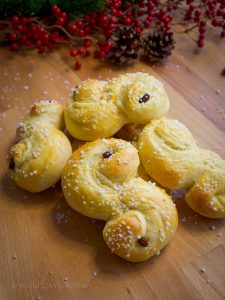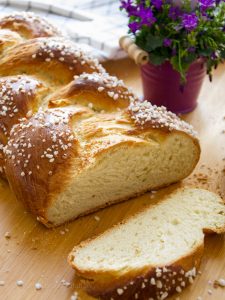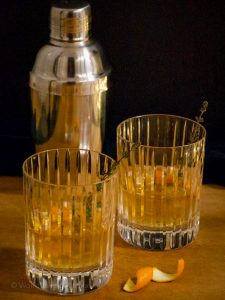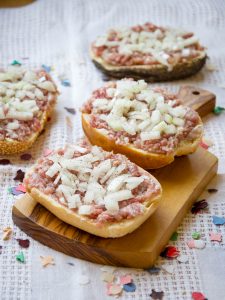Lussekatter | Swedish Saffron Buns
- Christmas, Cookies & Pastries, Sweden
Lussekatter are fluffy, lightly sweet, saffron infused yeast buns, also known as Swedish Saffron Buns or St. Lucia Buns. They are a very traditional Christmas treat in Sweden, where they are enjoyed throughout the entire Advent Season, but especially for the celebration of St. Lucia Day. They are known for their bright yellow coloring from the saffron and their typical s-shape form.
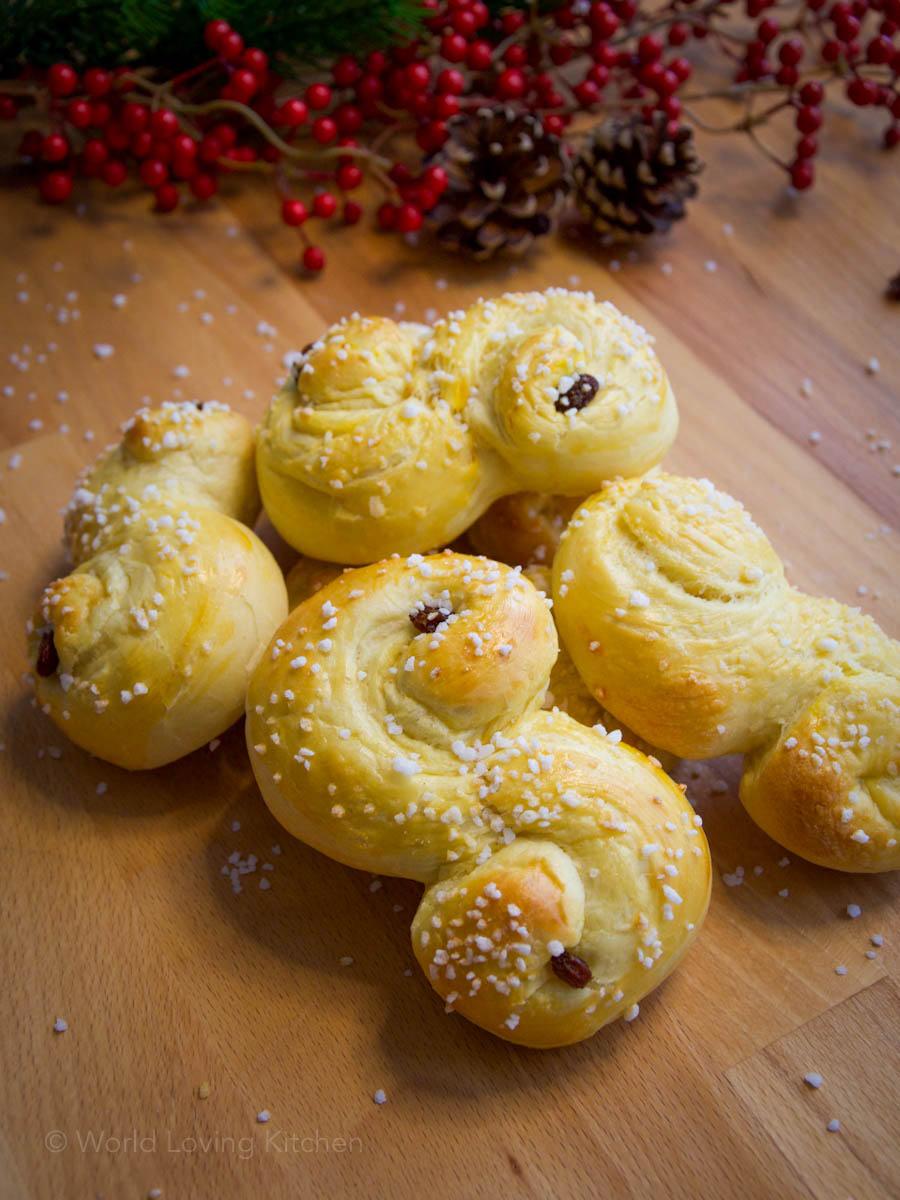
The Swedish St. Lucia Day falls on the 13th of December and celebrates Saint Lucia, who, according to legend, brought food to Christians who hid in Roman catacombs back in the 4th century. To light her way, she wore a wreath of candles on her head to have her hands free to carry all the food.
Another aspect of the St. Lucia Day is the celebration of light. Until 1752, the 13th of December was the shortest day and the longest night of the year in Sweden, which was believed to be a night filled with evil spirits. To stay awake that night, light and food was vital to keep the evil spirits away.
This is why even today, the candle procession and special food like Lussekatter are an essential part of the celebration.
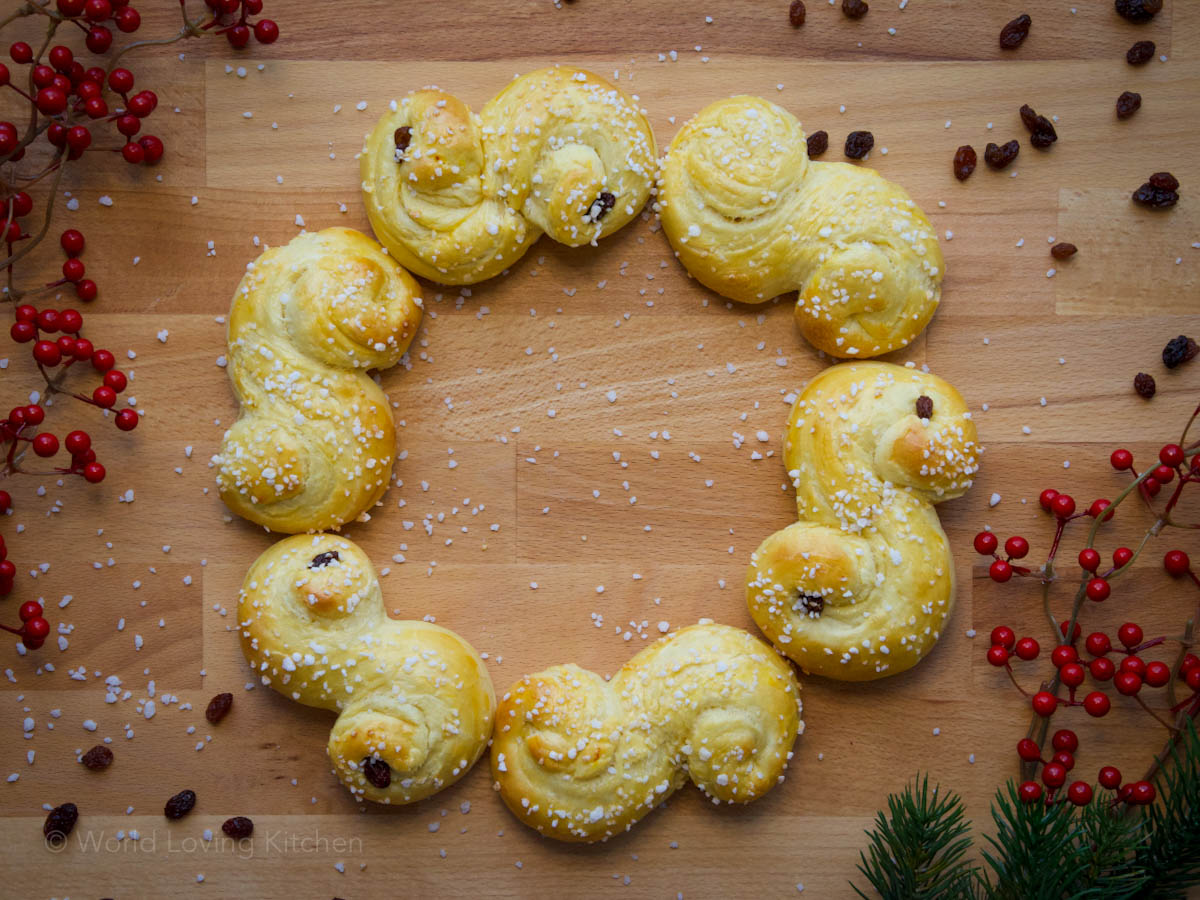
Ingredients you will need for this recipe:
- milk
- saffron threads
- white granulated sugar
- active dry yeast
- all-purpose flour or bread flour
- salt
- butter
- quark or sour cream as an alternative
- eggs
- raisins
- coarse decorating sugar
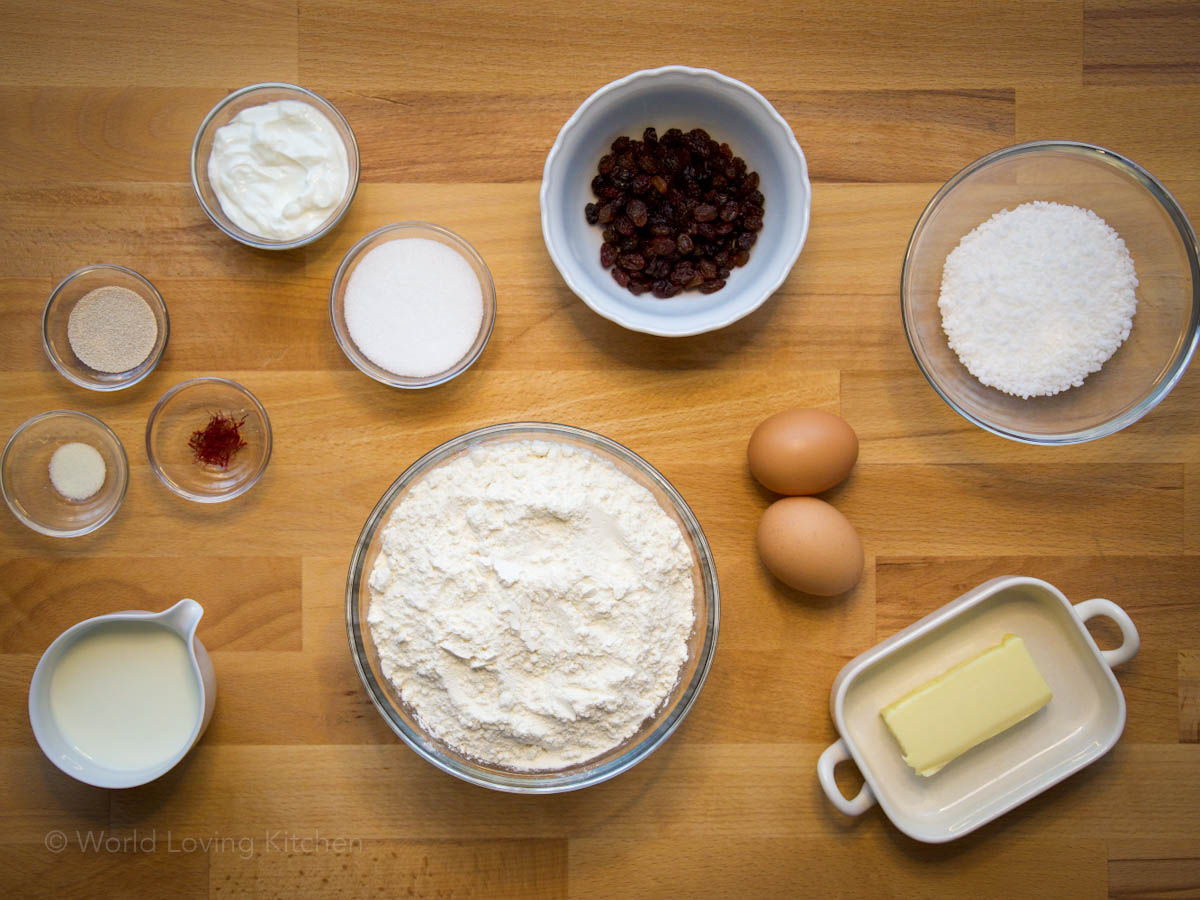
How to make Lussekatter - Swedish Saffron Buns:
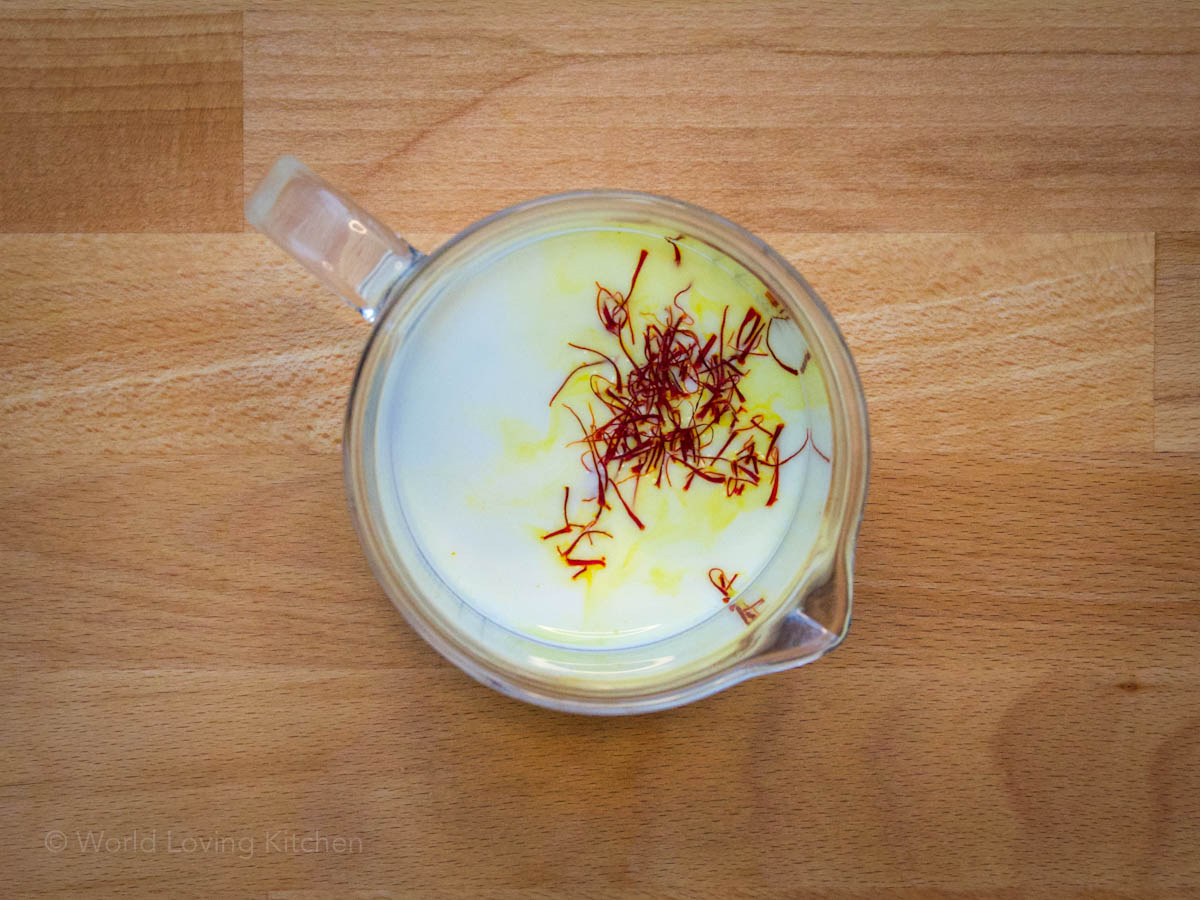
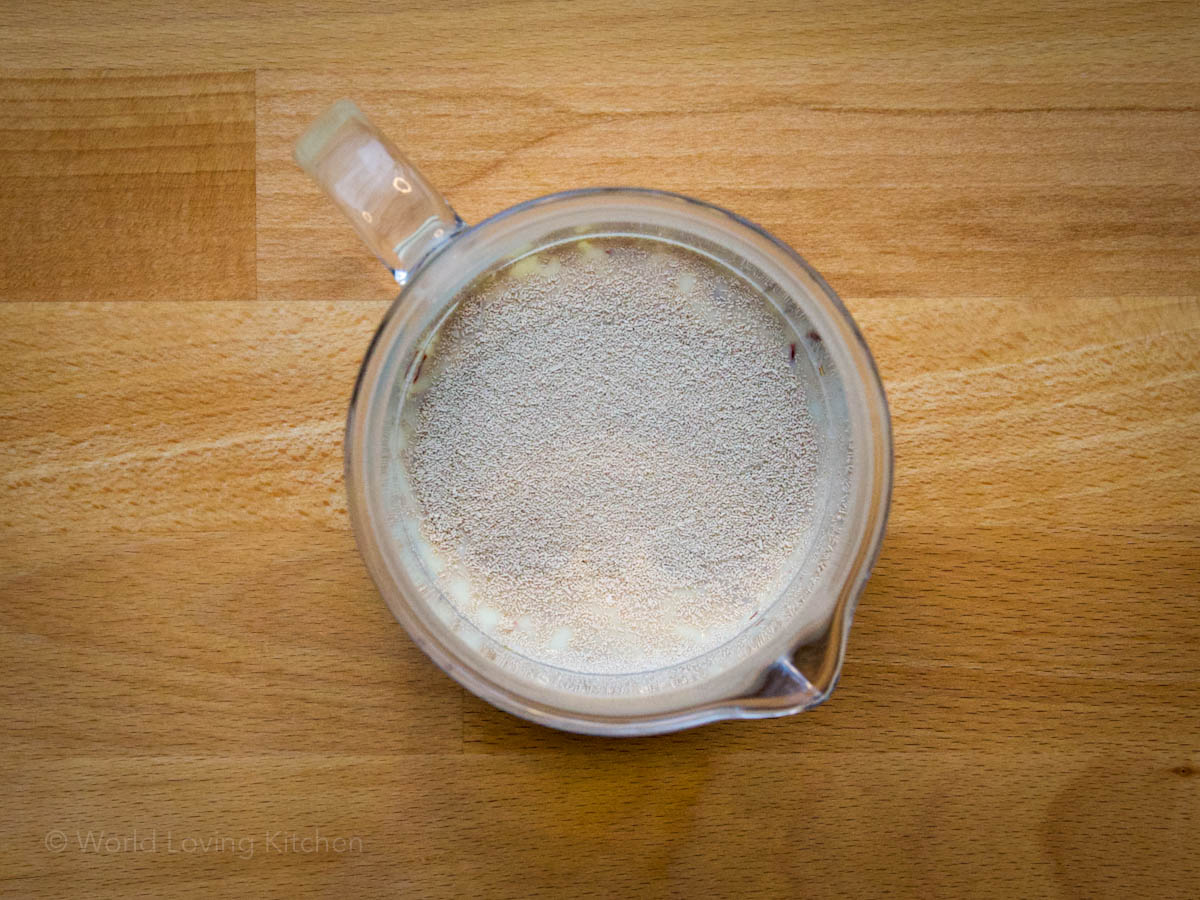
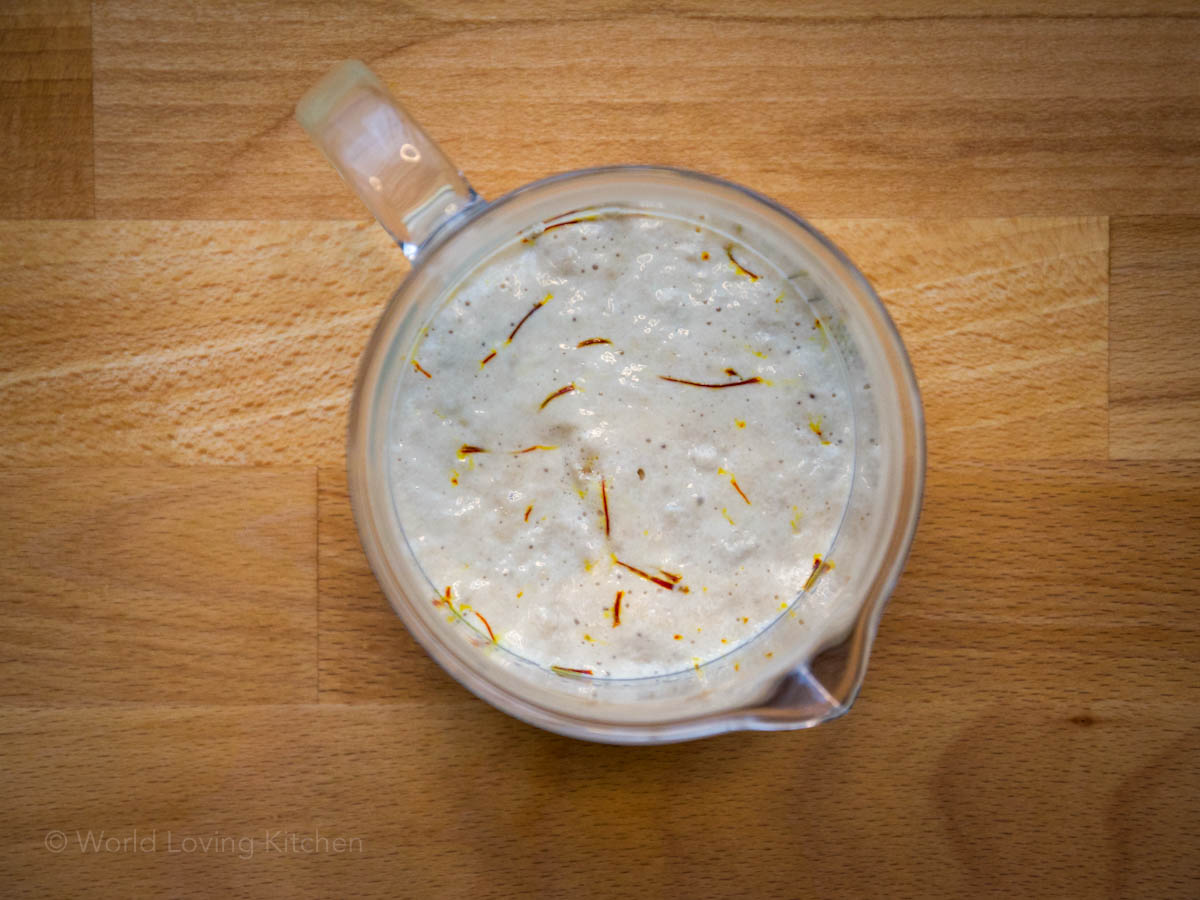
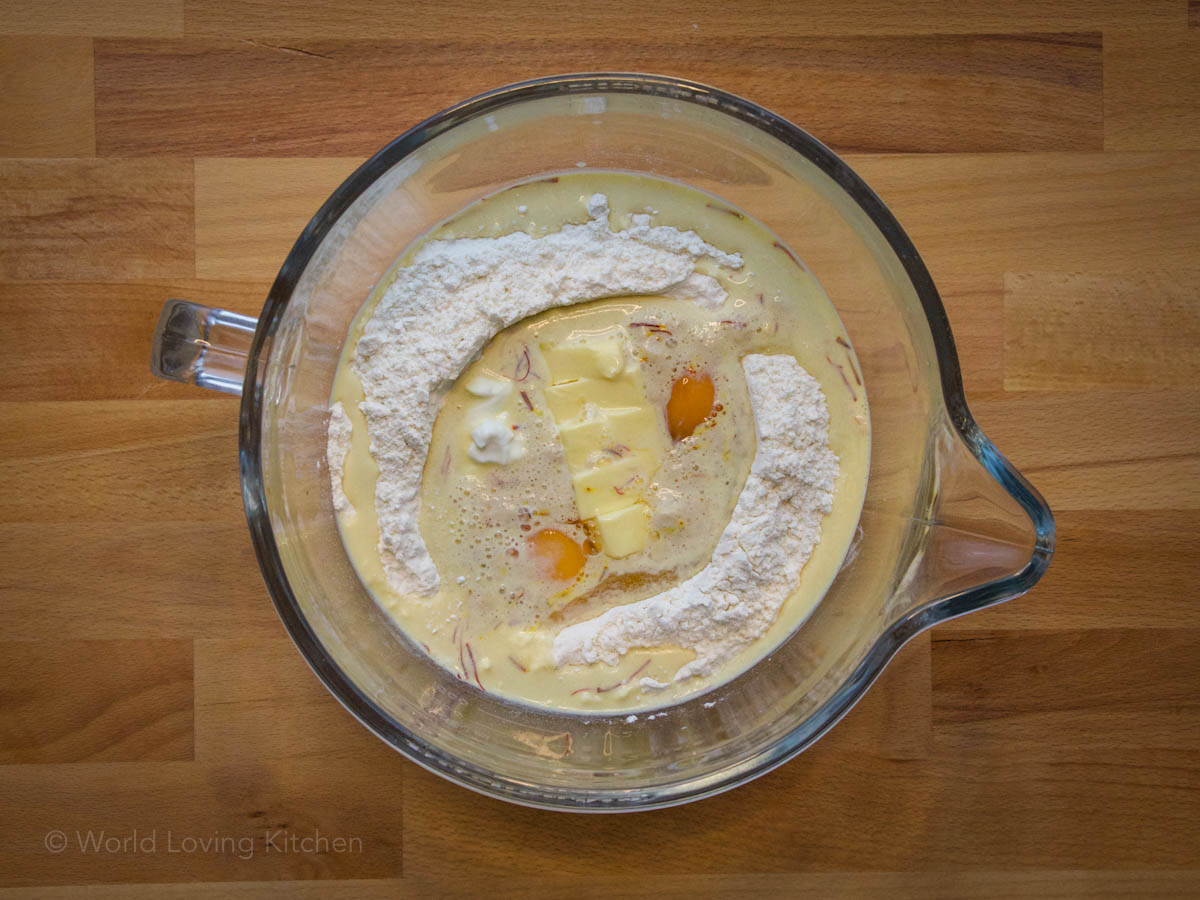
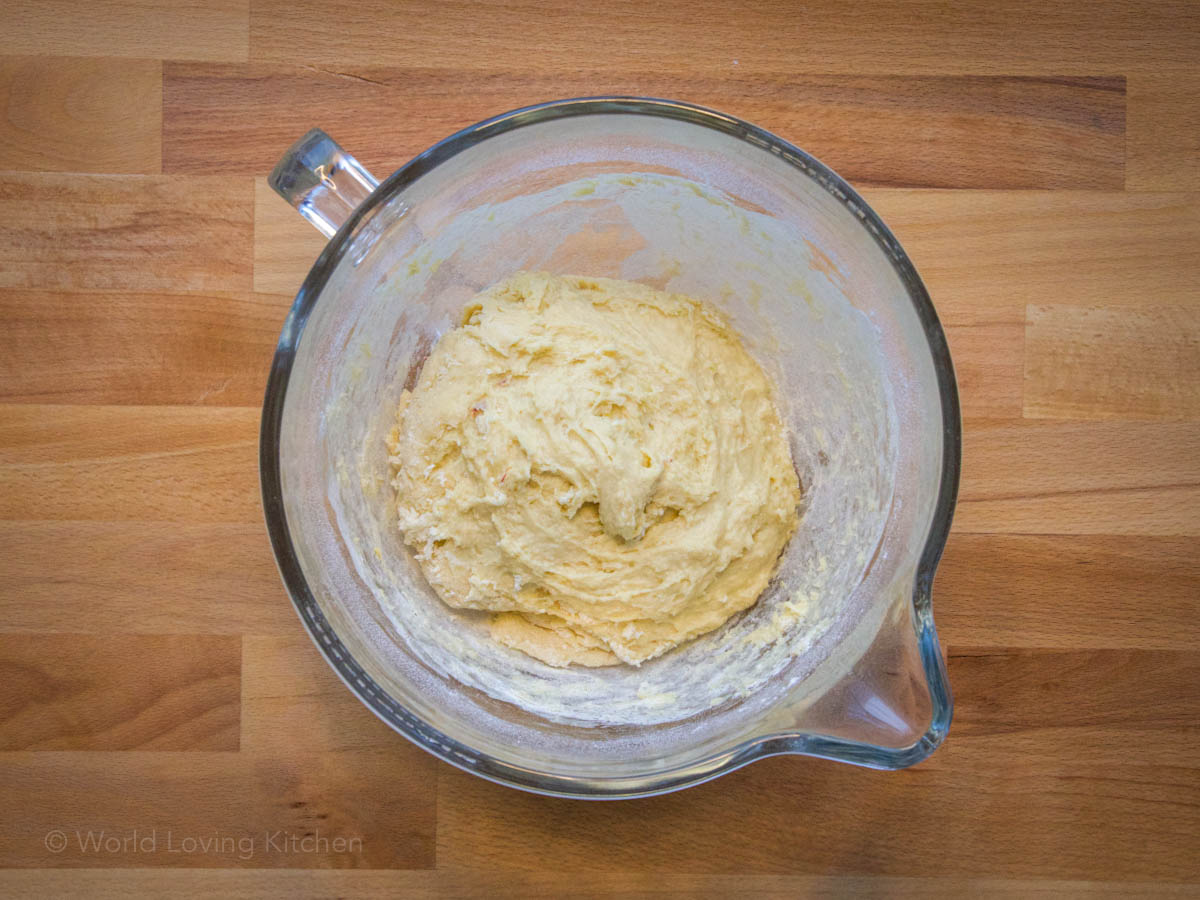
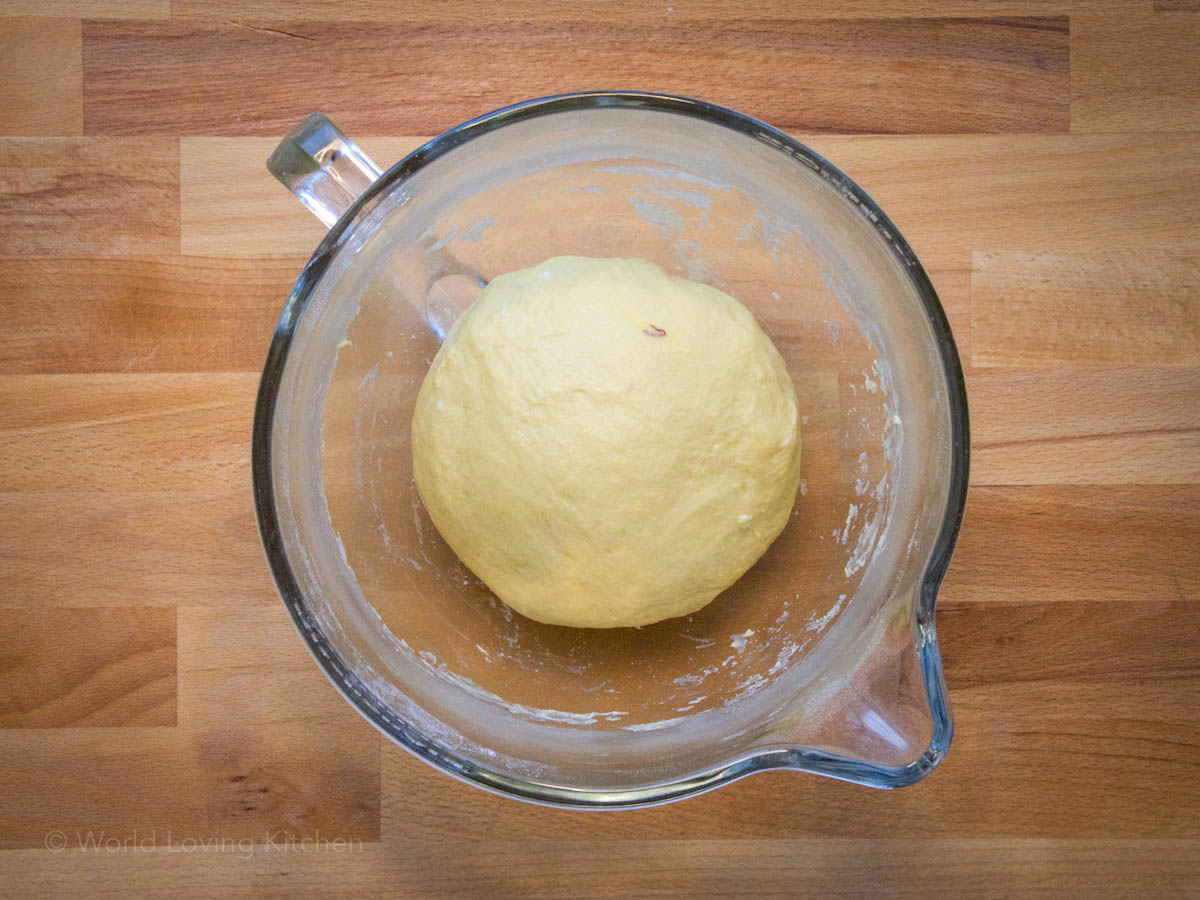
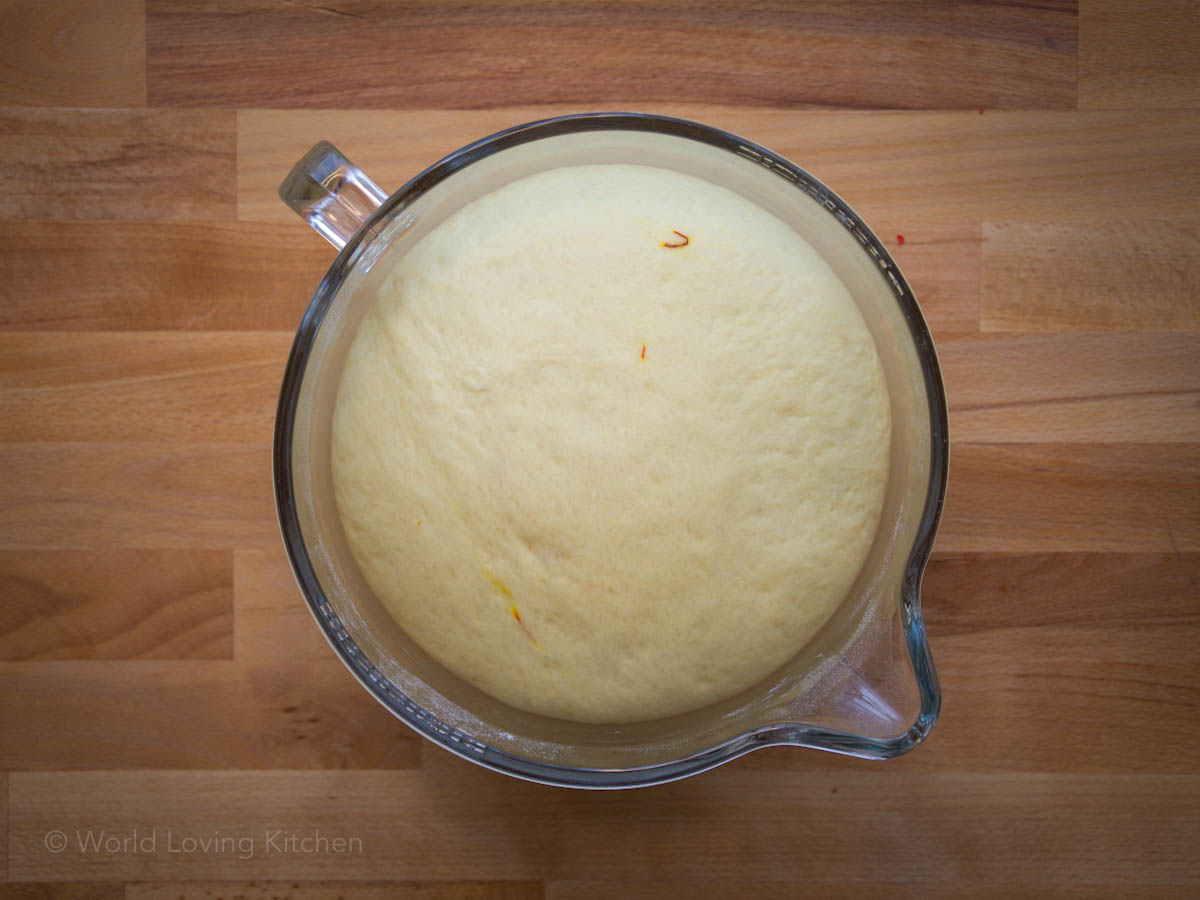
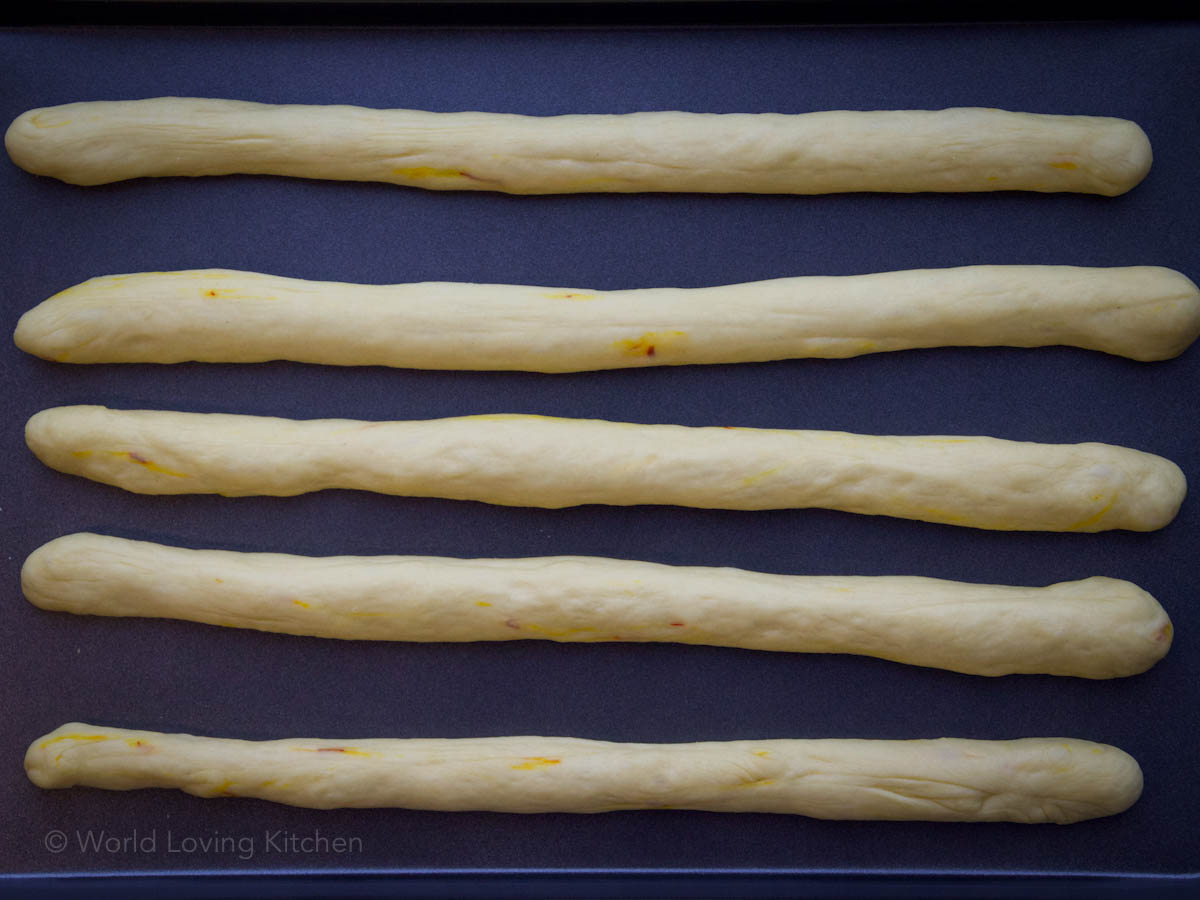
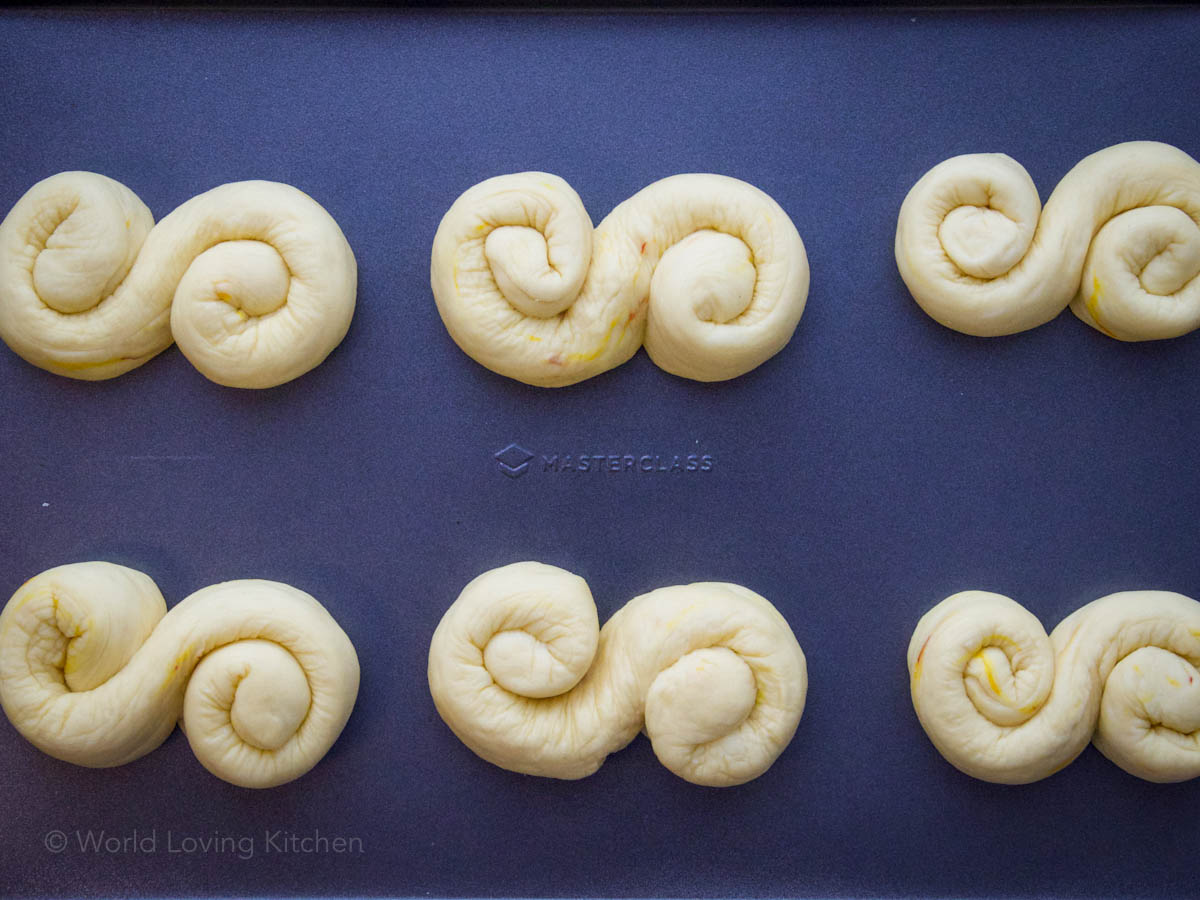
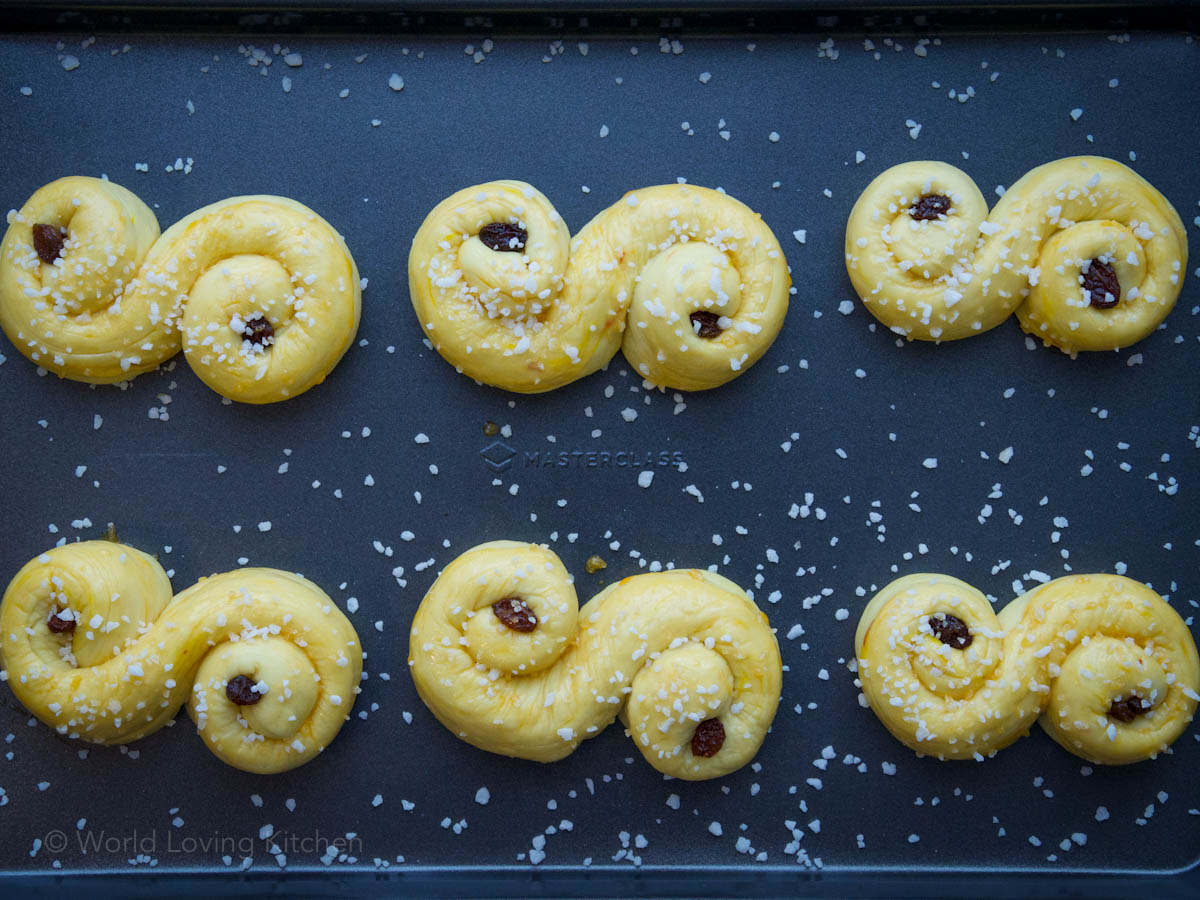
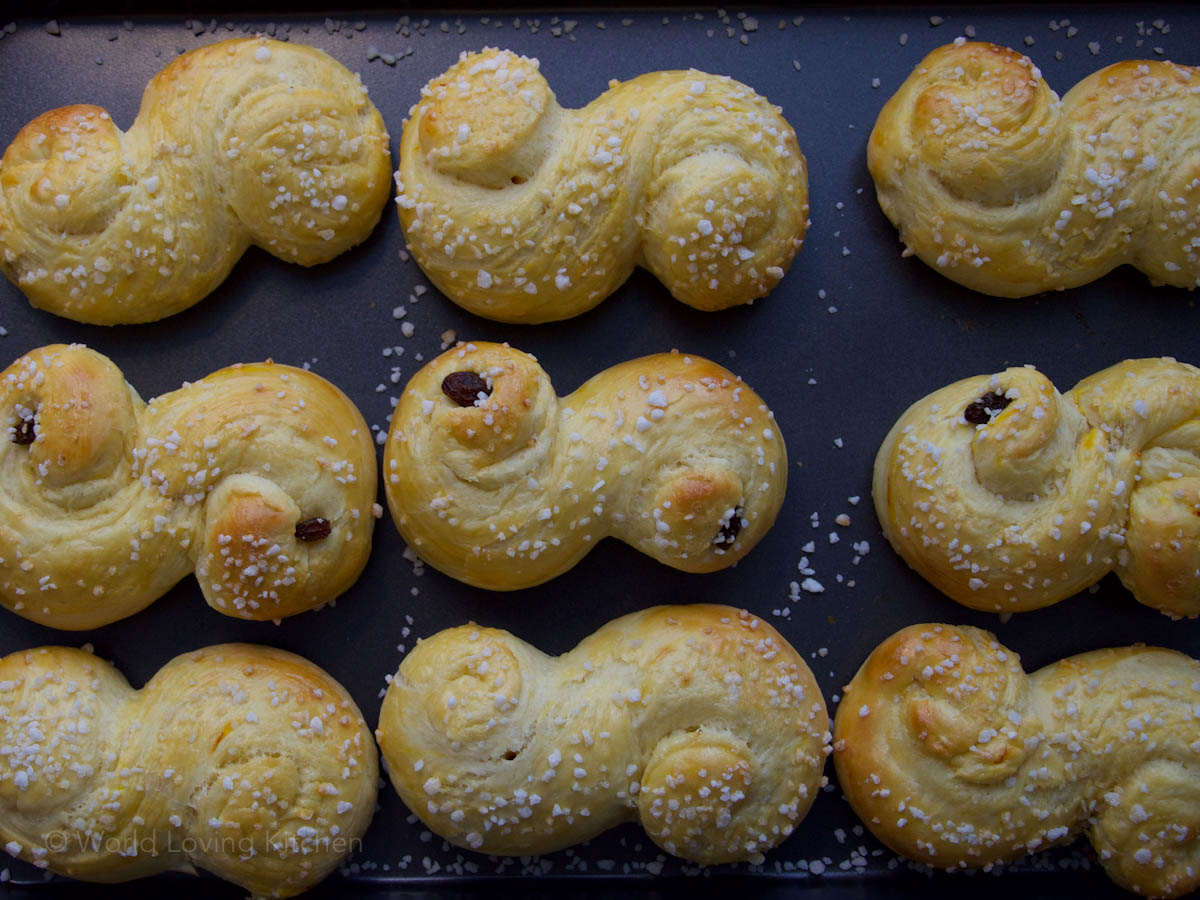
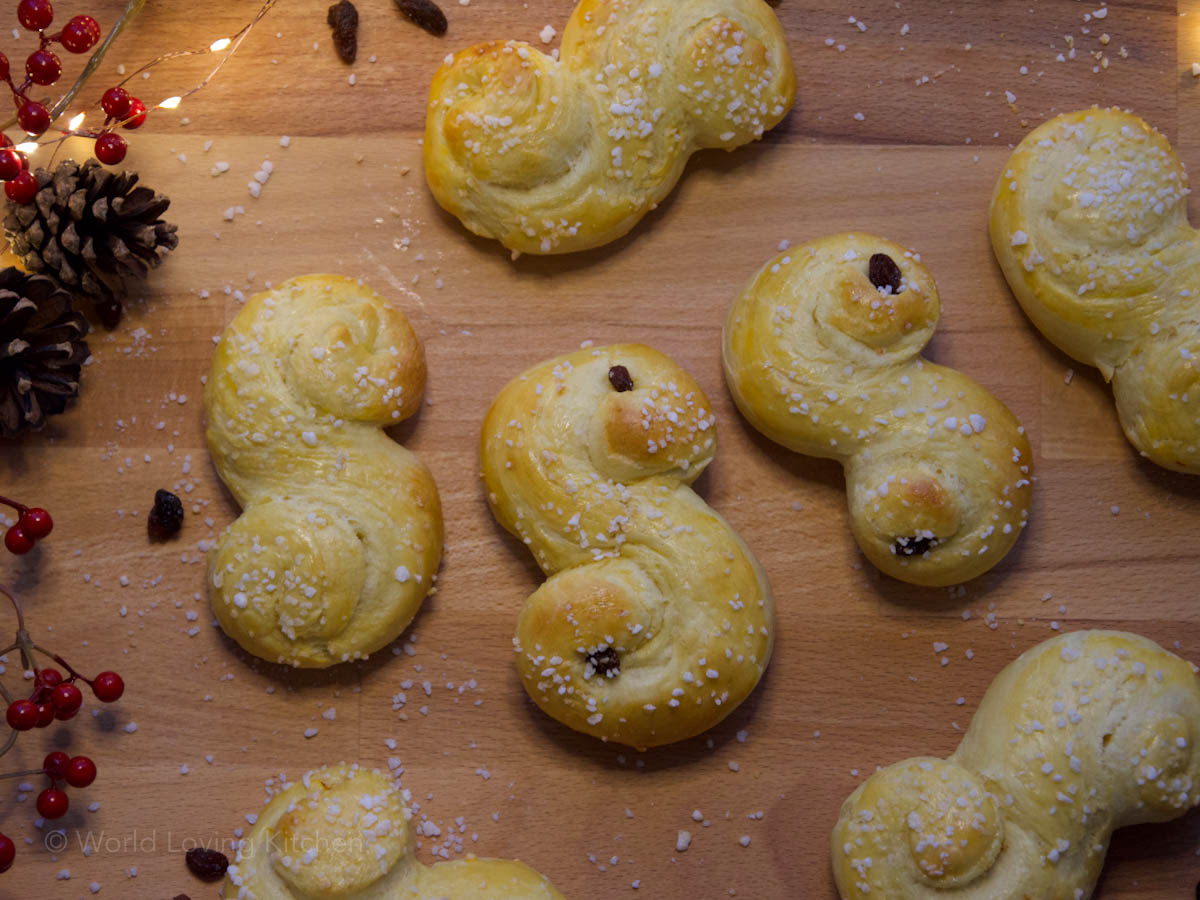
(1) Milk-Saffron-Yeast mixture
Warm up 175 ml milk to lukewarm temperature. Add 1/2 teaspoon saffron threads, 7 g active dry yeast and 1 teaspoon of sugar. Give it a good stir and let the milk-saffron-milk mixture sit for about 5-10 minutes for the yeast to bloom.
The yeast will be activated (bloomed) when the milk-saffron-yeast mixture will foam up on the surface.
(2) Combine flour, remaining sugar, salt
Meanwhile, in a large mixing bowl combine 500 g all-purpose flour, the remaining sugar and 1/2 teaspoon of salt.
(3) Add the rest of the ingredients
Make a well in the center of your mixing bowl and add the activated milk-saffron-yeast mixture, 2 eggs, 55 g soft butter and 60 g quark|sour cream.
(4) Mix and knead the dough
In a stand-mixer (you don’t have to use a stand-mixer) mix the ingredients together on low until well combined.
Switch to the dough hook from your mixer and knead the dough on medium-low speed for about 5-10 min. If the dough seems too sticky, slowly add more flour – one tablespoon at a time – keep kneading the dough.
The dough should be slightly sticky to the touch, but should not stick to your hands completely when you handle it.
(5) Let the dough rest
Shape the dough into a ball and place it in large mixing bowl and cover it with a clean kitchen towel. Let it sit in a warm place for about 1.5 to 2 hours until the dough has doubled in size.
(6) Form the dough into ‘S-Shapes’
When the dough has doubled in size, place the dough on a big enough surface to work on. If it sticks to the surface, dust the surface with a little bit of flour.
Gently knead the dough to press out some of the air. Divide the dough into 12-14 pieces (about 60 g – if you are weighing).
Roll out the individual pieces of dough into 30-35 cm long and about 2 cm thick log-shaped pieces.
Curl the ends of the log-shaped pieces in opposite directions to form a ‘S’ shape. Place the ‘S’ shape pieces on a lined baking sheet and repeat with the remaining dough.
(7) Let the dough rest for 10 min
Cover the baking sheets with a clean kitchen towel and let the ‘S’ shapes rest for 10 min.
In the meantime, pre-heat your oven to 200°C.
(8) Brush with egg wash and decorate with raisins an coarse sugar
For the egg wash whisk together 1 egg yolk and 10 ml of milk. Using a pastry brush, brush the egg wash over the unbaked ‘S’ shaped buns.
Press raisins in the center of each curled up end of the ‘S’ shape and sprinkle with coarse decorating sugar.
(9) Bake at 200°C
Bake at 200°C for about 10 min.
Note: ‘The Wood Skewer Check’ The saffron buns are done, when there is no dough sticking to the wooden skewer, when piercing the buns with it in the center.
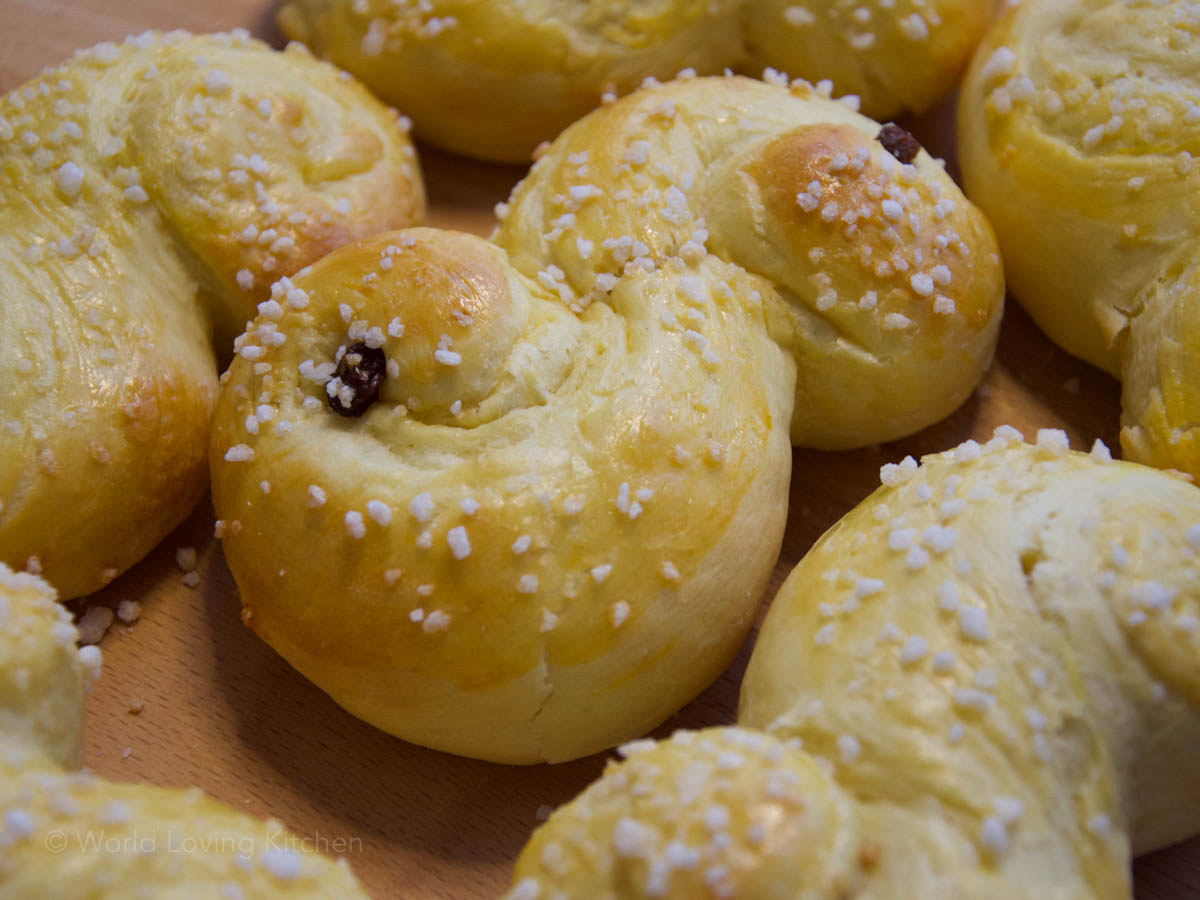
Some Recipe Tips:
Glögg: Glögg is Swedish Mulled Wine and is typically served with Lussekatter on St. Lucia Day.
You can also try my German Mulled Wine recipe, which is very similar to Swedisch Glögg and will go great with this Lussekatter recipe.
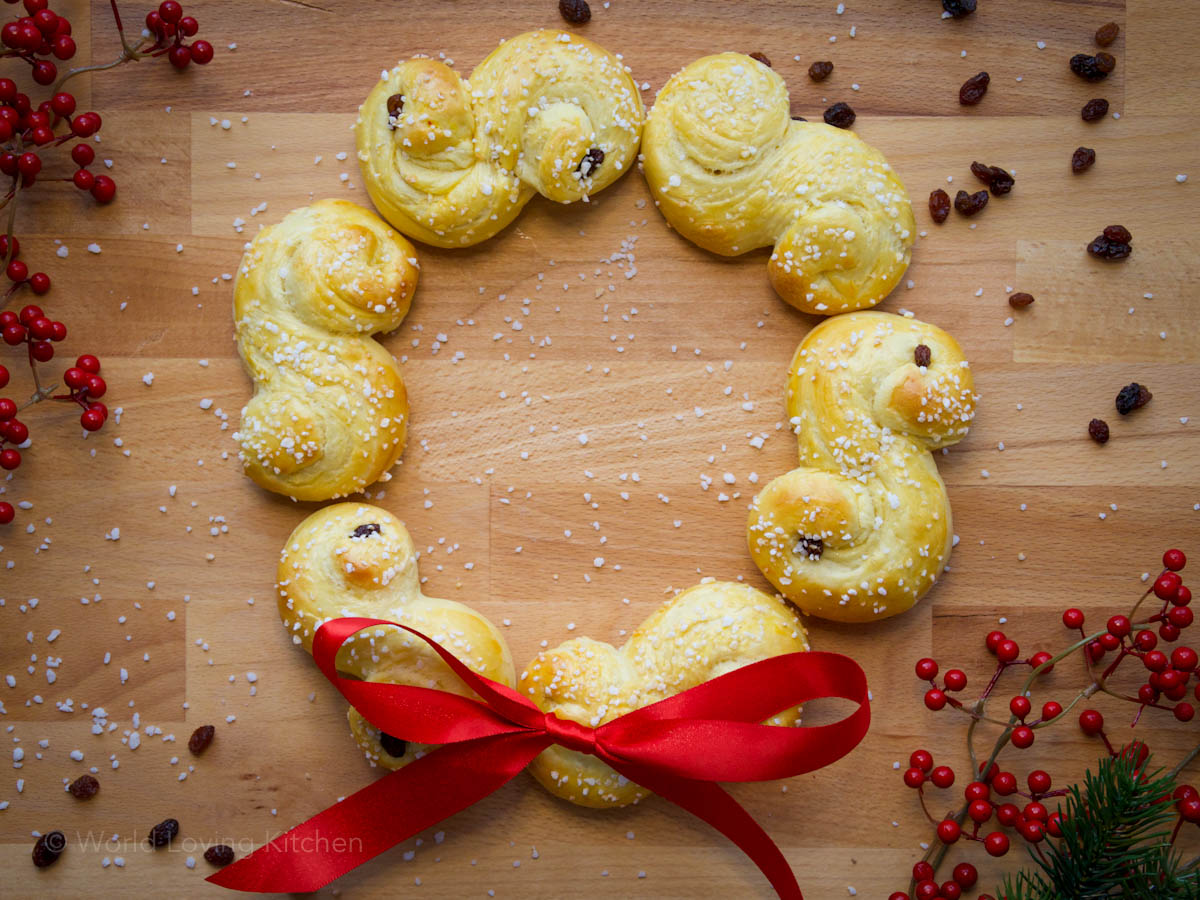
Lussekatter | Swedish Saffron Buns
Course: PastryCuisine: SwedenDifficulty: Normal12-14
pieces50
minutes2
hours10
minutes3
hoursLussekatter are fluffy, lightly sweet, saffron infused yeast buns, also known as Swedish Saffron Buns or St. Lucia Buns. They are a very traditional Christmas treat in Sweden, where they are enjoyed throughout the entire Advent Season, but especially for the celebration of St. Lucia Day. They are known for their bright yellow coloring from the saffron and their typical s-shape form.
Ingredients
175 ml milk
1/2 teaspoon saffron threads
50 g white granulated sugar
7 g dry active yeast
500 g all-purpose flour or bread flour
1/2 teaspoon salt
55 g butter - soft | room temperature
60 g quark or sour cream as an alternative
2 eggs
- Extras & Decoration
1 egg yolk for egg wash
10 ml milk for eggwash
raisins
coarse decorating sugar
Directions
Milk-Saffron-Yeast mixture
Warm up 175 ml milk to lukewarm temperature. Add 1/2 teaspoon saffron threads, 7 g active dry yeast and 1 teaspoon of sugar. Give it a good stir and let the milk-saffron-milk mixture sit for about 5-10 minutes for the yeast to bloom.
The yeast will be activated (bloomed) when the milk-saffron-yeast mixture will foam up on the surface.
Combine flour, remaining sugar, salt
Meanwhile, in a large mixing bowl combine 500 g all-purpose flour, the remaining sugar and 1/2 teaspoon of salt.
Add the rest of the ingredients
Make a well in the center of your mixing bowl and add the activated milk-saffron-yeast mixture, 2 eggs, 55 g soft butter and 60 g quark|sour cream.
Mix and knead the dough
In a stand-mixer (you don't have to use a stand-mixer) mix the ingredients together on low until well combined.
Switch to the dough hook from your mixer and knead the dough on medium-low speed for about 5-10 min. If the dough seems too sticky, slowly add more flour - one tablespoon at a time - keep kneading the dough.
The dough should be slightly sticky to the touch, but should not stick to your hands completely when you handle it.
Let the dough rest
Shape the dough into a ball and place it in large mixing bowl and cover it with a clean kitchen towel. Let it sit in a warm place for about 1.5 to 2 hours until the dough has doubled in size.
Form the dough into 'S-Shapes'
When the dough has doubled in size, place the dough on a big enough surface to work on. If it sticks to the surface, dust the surface with a little bit of flour.
Gently knead the dough to press out some of the air. Divide the dough into 12-14 pieces (about 60 g - if you are weighing).
Roll out the individual pieces of dough into 30-35 cm long and about 2 cm thick log-shaped pieces.
Curl the ends of the log-shaped pieces in opposite directions to form a 'S' shape. Place the 'S' shape pieces on a lined baking sheet and repeat with the remaining dough.
Let the dough rest for 10 min
Cover the baking sheets with a clean kitchen towel and let the 'S' shapes rest for 10 min.
In the meantime, pre-heat your oven to 200°C.
Brush with egg wash and decorate with raisins an coarse sugar
For the egg wash whisk together 1 egg yolk and 10 ml of milk. Using a pastry brush, brush the egg wash over the unbaked 'S' shaped buns.
Press raisins in the center of each curled up end of the 'S' shape and sprinkle with coarse decorating sugar.
Bake at 200°C
Bake at 200°C for about 10 min.
Note: 'The Wood Skewer Check' The saffron buns are done, when there is no dough sticking to the wooden skewer, when piercing the buns with it in the center.
Notes
- Glögg: Glögg is Swedish Mulled Wine and is typically served with Lussekatter on St. Lucia Day.
- You can also try my German Mulled Wine recipe, which is very similar to Swedisch Glögg and will go great with this Lussekatter recipe.

